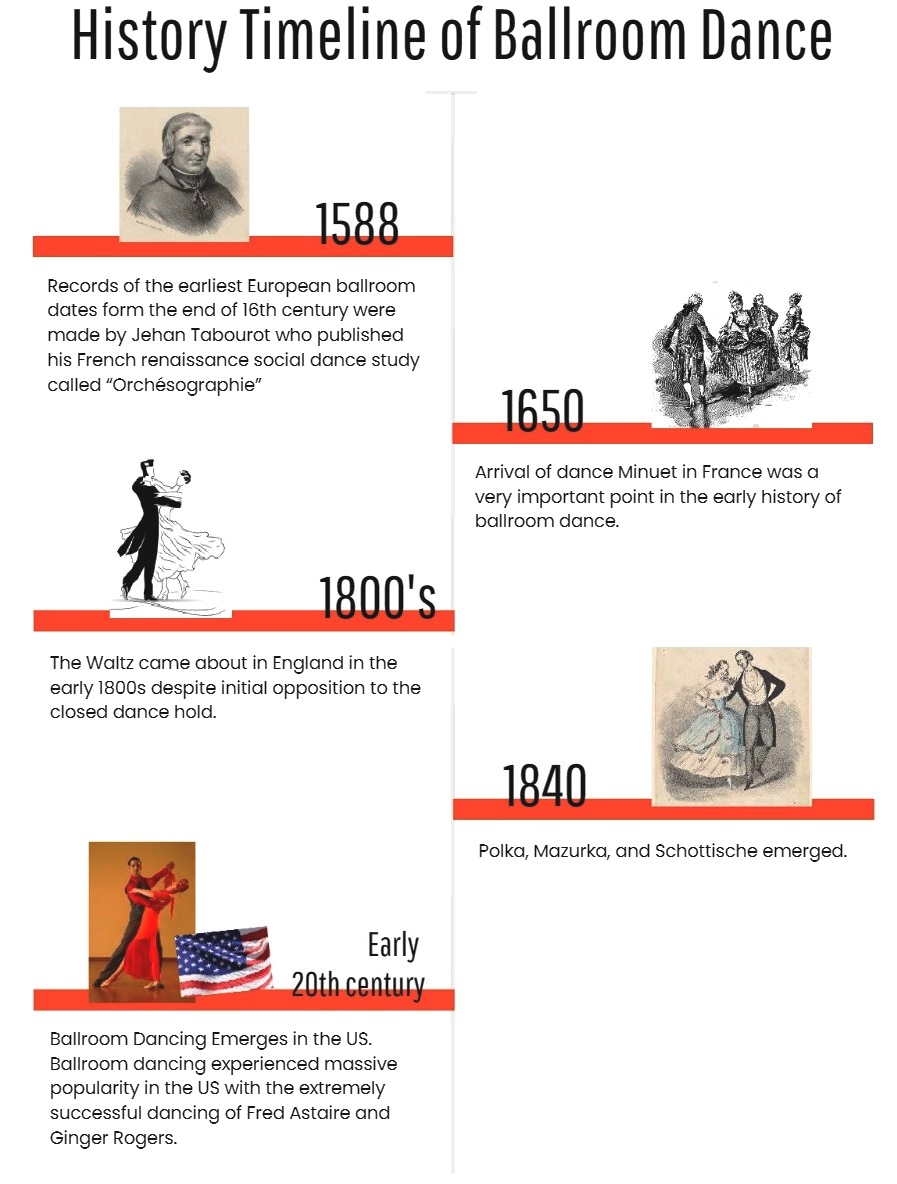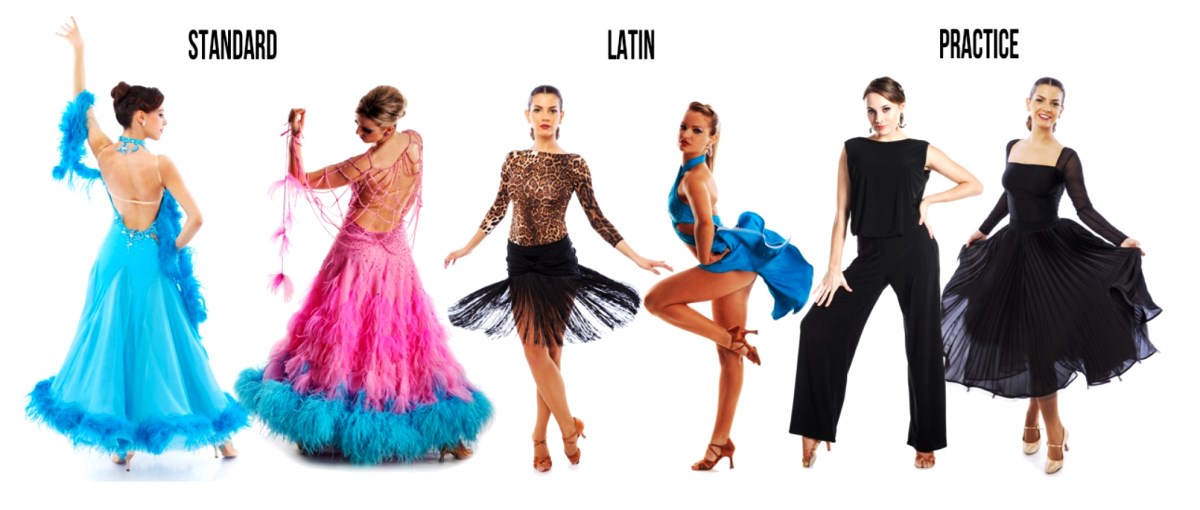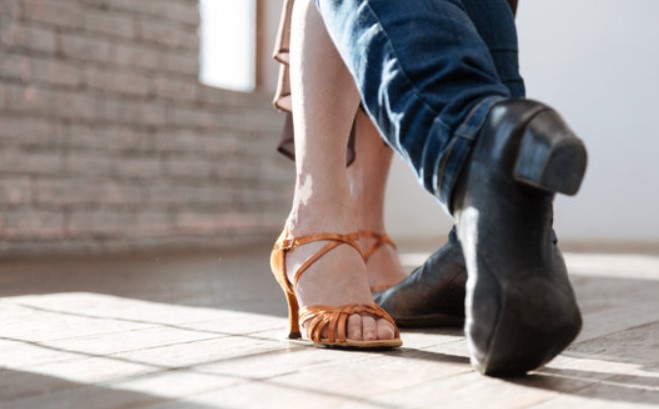For centuries until the mid-20th century, Ballroom dance was the definitive form of entertainment.
Although its popularity is nowhere near like before, modern forms of Ballroom dancing like the Waltz and Tango are still being done and enjoyed by thousands of people worldwide.
If you’re a dance enthusiast, you may have wondered once or twice about this dance. No worry, today’s article can answer all of your questions!
Table of Contents
What Is Ballroom Dance?
The term “Ballroom dance” doesn’t refer to any specific kind of dance. Rather, it’s an umbrella term that includes dance styles, like Waltz, Tango, Salsa, etc.
In a more technical sense, traditional Ballroom dancing is any form of dance that is performed by a couple in a closed dance position (aptly called “ballroom dance position.”)
The “partnered” portion is important here. Ballroom dancing has always been a partnered dance. Sure, it’s entirely possible to practice and – more recently – dance solo.
But you’ll have to hit the stage with a partner in most dance competitions and events.
Origin & History
Whenever “Ballroom dancing” is mentioned, most people will draw up the mental image of illustrious ballrooms in the 17th or 18th century, with people in fancy dresses and suits milling about and dancing to soft orchestral music.
And they’re not wrong: the roots of ballroom dancing can be traced back to European court dances, mostly performed by the aristocrats.
But you may be surprised to learn that Ballroom dancing didn’t start off as a dance of society’s elites.
The Waltz, the oldest traditional ballroom dance, originated in 16th-century Europe. It’s considered the origin of ballroom dance.
The Waltz was initially popular among lower classes but eventually made its way to upper classes’ households and royal courts. However, the dance is adapted to make it more “stately.” This adaptation gives rise to the Minuets.
However, aristocrats grew bored of the minuet and started attending the balls of their lower-class servants. And the two classes in society got the chance to intermingle. Ballroom dancing became a pastime for both the elites and the common people.
As the Waltz gained popularity in Vienna and was introduced to England, composers such as Johann Strauss and Franz Lanner developed more music in the 3/4 timing.
By this point, Ballroom dancing has become extremely popular throughout Europe. At every party and gathering, there’s guaranteed to be a dance or two.
From the 20th century to the modern age, besides the Waltz (which is still practiced and performed at many clubs) and the Minuets, many other exciting dance styles have been co-opted under the “Ballroom dancing” umbrella.
You have the Foxtrot, the Tango … even Swing dancing is considered a type of ballroom dancing.

Marinduque State College
Today, Ballroom dancing is still alive and well. In the 21st century, you can find plenty of reality TV shows like Dancing with the Stars where you can find ballroom-type dance performances regularly.
It’s pretty amazing seeing how well this age-old dance form has lasted through the years!
Characteristics
Ballroom dances are characterized by being, typically, partnered dances. Ballroom dancers typically perform intricate patterns and steps with their partners, strongly emphasizing timing and rhythm.
The dance requires high coordination and synchronization between partners, who must communicate and respond to each other through physical cues.
This is the reason why Ballroom dancing has always been associated with romanticism and love! You really need to have a certain level of chemistry with your partner to pull off a performance well.
In addition to technical skills, Ballroom dance emphasizes the importance of presentation and performance quality.
Even though Ballroom dancing has become a lot less “formal” than the court dances of the aristocrats back in the Victorian Era, modern-day ballroom dancers are still expected to maintain good posture and display a sense of elegance throughout their performance.
They must also express the emotion and style of the music through their movements, whether it be the Waltz’s romance or the Tango’s passion.
And last but not least: dances are typically hosted in a large ballroom. It’s called “Ballroom” dances for a reason!
See more: Bachata Dance: History, Steps, Music, Competition & More
Types
There are two major types of ballroom dance: Standard/Smooth dances vs. Latin/Rhythm dances.
Standard/Smooth Dances
Standard/Smooth Ballroom dances are characterized by their smooth and graceful movements, as well as their formal and elegant appearance.
This is the sort of dance that most people will think about whenever they hear the word “Ballroom dancing” being mentioned.
These dances are typically performed in closed positions, with dancers moving around the dance floor in a flowing and circular manner.
Standard/Smooth ballroom dances are the older type of dance compared to Latin/Rhythm. Their roots are in European ballroom traditions and are often associated with formal events and occasions.
Some standard/smooth dances you may know include:
The Waltz
This is the oldest type of ballroom dancing, dating back to the 16th-17th century.
When it first came out, the Waltz caused quite a shock. It was the first dance where a man would hold a woman in his arms, which didn’t sit very well with conservative society then.
Viennese Waltz
It was the later iteration of the original Waltz. The Viennese Waltz came into being in 1959 in the Provence region of France (it’s called the Viennese Waltz to distinguish it from the original Waltz and the French Waltz.)
Today, it’s often referred to as “old-school” Waltz.
The Foxtrot
This is a newer type of Ballroom dance. It came to be in the 20th century and was named after Harry Fox, mimicking his rapid trotting steps to ragtime music.
The Quickstep
Invented in the 1920s, the Quickstep was an English invention that combines the Foxtrot and the Charleston swing dance.
Latin/Rhythm Dances
Contrary to the picture of elegance and grace that Standard/Smooth dances inspire, Latin/Rhythm dances are all about sensuality, energy, and enthusiasm.
These dances are typically performed in open positions, with dancers incorporating a variety of turns, spins, and lifts into their routines.
Unlike the Standard/Smooth dances that are commonly associated with European culture, the Latin/Rhythm dances have their roots in Latin American and African dance traditions.
Additionally, these dances are also more “informal” than the Standard/Smooth dances. They’ll fit better in social settings like house parties.
Some common Latin/Rhythm dances include:
The Pasodoble
The Pasodoble is said to have originated from Spain (though the true origins remain a hotly debated topic today.)
It’s choreographed after the story and movements of a Spanish bullfighter (Matador) when fighting against a bull.
However, because of its many choreographic rules, the Pasodoble is mostly a competitive dance rather than a social dance.
The Samba
This Brazilian Ballroom dance is a lively, rhythmic dance performed 2/2 or 4/4 times. Note that the ballroom-style Samba, the one discussed here, differs greatly from the original Samba.
Cha Cha
The Cha-Cha came to being in the 1950s and was known for its flirtatious, vigorous hip movements. The dancers exude raw sensuality as they move and synchronize their movements to the beat of the music.
Mambo
The Mambo was an off-shoot of the danzón, which is considered the national dance of Cuba. It broke the rules of the danzón that required the dancers to adhere to a very specific choreography and rules.
With the Mamba, the dancers can perform and express themselves more freely – the exact reason why the Mambo has become an enduring hit and is practiced even today!
Costumes
Part of the fun of doing Ballroom dancing is that you get to dress like you’re off to a prom party.
And it’s true: in nearly all competitions, the dancers will dress in the most elegant ensembles they can find in their closets (save for a few informal dance sessions or competitions in which the dancers can come dressed in … whatever they’d like.)

For Standard ballroom dances
Male dancers typically wear tailored suits or tuxedos with a bow tie or cummerbund. Just think vintage.
Meanwhile, female dancers wear long flowing gowns with fitted bodices and flared skirts. To add extra glamor to the dance, their dresses will often be studded with sequins, crystals, and feathers to add some shine to their bodies and highlight their movements.
In some dances, such as the Viennese Waltz, the dresses may have multiple layers of fabric to create a flowing effect as the dancers twirl around the dance floor.
The beautiful effect will enhance the look of the performance greatly.
For Latin/Rhythm Ballroom dances
The costumes tend to be more colorful and vibrant, reflecting the energetic and expressive nature of the dance.
Male dancers often wear fitted shirts and trousers in bright colors or bold patterns. Whereas female dancers wear dresses with shorter skirts and slits to allow for greater freedom of movement.
These cuts will also show off the dancers’ legs and parts of their bodies, which play into the sensuality and intimacy of the dance.
The Ballroom dance dresses may feature fringe, ruffles, or beaded accents to emphasize the rhythmic movements of the dance.
Shoes
And last but not least, costumes aren’t enough: shoes are needed, as well. Most ballroom dancers will have a special pair of dance shoes that they only wear to competitions or dance-offs.
Standard/Smooth dancers typically wear black or white leather shoes with low heels.
Latin/Rhythm dancers may wear shoes with higher heels and more flexible soles to allow for a greater range of motion.
Check more: 7 Best Ballroom Dance Shoes for Beginners & Professional Dancers
Ballroom Dance Competition
A huge part of Ballroom dancing is competition. You can find Ballroom dance competitions being hosted in almost every country worldwide. They can range from small, local events to huge, multi-national competitions.
Generally speaking, there are two main categories of ballroom dance competitions: Pro-Am and Amateur.
Pro-Am competitions involve professional and amateur dancers competing together as a couple. The professional dancer is usually a teacher or coach who trains and accompanies the amateur dancer.
On the other hand, Amateur competitions are exactly how they sounded: two amateurs, non-professional dancers competing together as a couple.
Competitions are judged by a panel of experts who evaluate the dancers based on factors such as technique, musicality, and presentation. The judges award points to each couple, and the couple with the highest overall score is declared the winner.
Winning a Ballroom dance competition can bring prestige and recognition to the dancers and may lead to further training and performance opportunities!
Final Words
Ballroom dance is a rich and vibrant art form that has been enjoyed by people worldwide for centuries. From its roots in the royal courts of Europe to its modern-day popularity on reality television shows, Ballroom dance has surely adapted well to the 21st century.
We hope this article has been useful to you. Who knows, maybe after reading this article, you finally got the inspiration you’d need to sign up for that Ballroom dancing class you’ve been holding up on. Or book a ticket to a ballroom dancing show in your local area!
What’s your favorite part about Ballroom dancing that draws you in? Tell us in the comment section!

